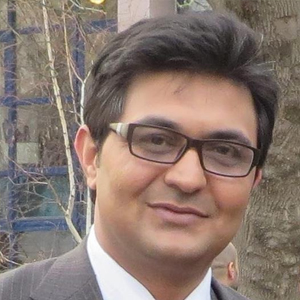The recent escalation in diplomatic tensions between India and Canada has captured the attention of the global community. The core issue revolves around the murder of Canadian citizen Hardeep Singh Nijjar, a Sikh leader, and the subsequent accusations by Justin Trudeau’s government against Narendra Modi’s government. This incident has not only strained bilateral relations but also underscored the complex dynamics at play in the world of geopolitics.
The Historical Context
To comprehend the current diplomatic standoff, one must delve into the historical context of the Khalistan movement. The Khalistan movement, seeking independence for the Indian Punjab province, reached its zenith in the 1980s. It was met with a militarized response by the Indian government, which included the controversial Operation Blue Star in the Golden Temple. This movement found resonance among Sikh immigrant communities in Canada and England, leading to a long-standing source of friction between India and these Western nations.
The Current Crisis
The trigger for the current diplomatic crisis was the murder of Hardeep Singh Nijjar, who was actively advocating for Khalistan’s liberation and a non-binding plebiscite for an independent Khalsa state. His murder not only shocked the Sikh community in Canada but also led to allegations by the Canadian government that India had a hand in his death. In response, Canada expelled an Indian diplomat, prompting India to suspend visa issuance to Canadian citizens. These actions have fueled the ongoing tensions between the two nations.
Canada’s Perspective
From Canada’s perspective, the allegations against India are a reflection of concerns within its Sikh immigrant communities. While Canada has consistently maintained that it does not support terrorism, it has been accused by India of tolerating and even supporting Khalistani elements. This disconnect in perspectives has contributed to the diplomatic quagmire.
Justin Trudeau’s government has made efforts to improve relations with Modi’s government, but these attempts have been met with limited success. Trudeau’s 2018 visit to India was marked by diplomatic difficulties, and a recent visit for the G-20 summit faced technical issues, leading to public ridicule. These setbacks have further strained the relationship.
Domestic and International Factors
One must also consider the domestic and international factors that have come into play in this diplomatic crisis. For Trudeau, the handling of the Hardeep Singh case may serve as a way to address domestic political pressures and divert attention from issues such as high inflation, housing problems, unemployment, and international failures. However, this approach carries the risk of further deteriorating relations with India.
India, on the other hand, dismisses the allegations as absurd, but it is concerning that some extremists within the country celebrate the incident.
Geopolitical Considerations
The current diplomatic standoff between India and Canada occurs at a time when the West, including the United States, seeks to build closer relationships with India as a counterbalance to China and the Russian-Chinese alliance. India’s strategic importance in the region cannot be understated, and both the United States and Western nations are actively courting India as a pivotal ally in global geopolitics.
Therefore, it is imperative for both India and Canada to carefully navigate this diplomatic crisis, considering the broader geopolitical landscape. Escalating pressure from Canada through its NATO allies might be challenging, as they are unlikely to risk losing India as a crucial partner in global geopolitics.
India’s Diplomatic Choice
India now faces a diplomatic choice: either to escalate pressure on Canada to address Khalistani elements or to give the impression of cooperating with the West in investigating the matter. The latter option would align with the interests of the United States and Western nations while preserving India’s standing as a key player in global affairs.
Conclusion
The recent escalation in diplomatic tensions between India and Canada, stemming from the murder of Hardeep Singh Nijjar, underscores the complex interplay of historical, domestic, international, and geopolitical factors. Finding a resolution to this crisis will require deft diplomacy and a commitment to dialogue from both nations. Ultimately, a balanced approach that respects the concerns of Sikh communities in Canada is essential for a peaceful resolution. The world will be watching closely as these two nations seek to navigate the stormy waters of international diplomacy.























